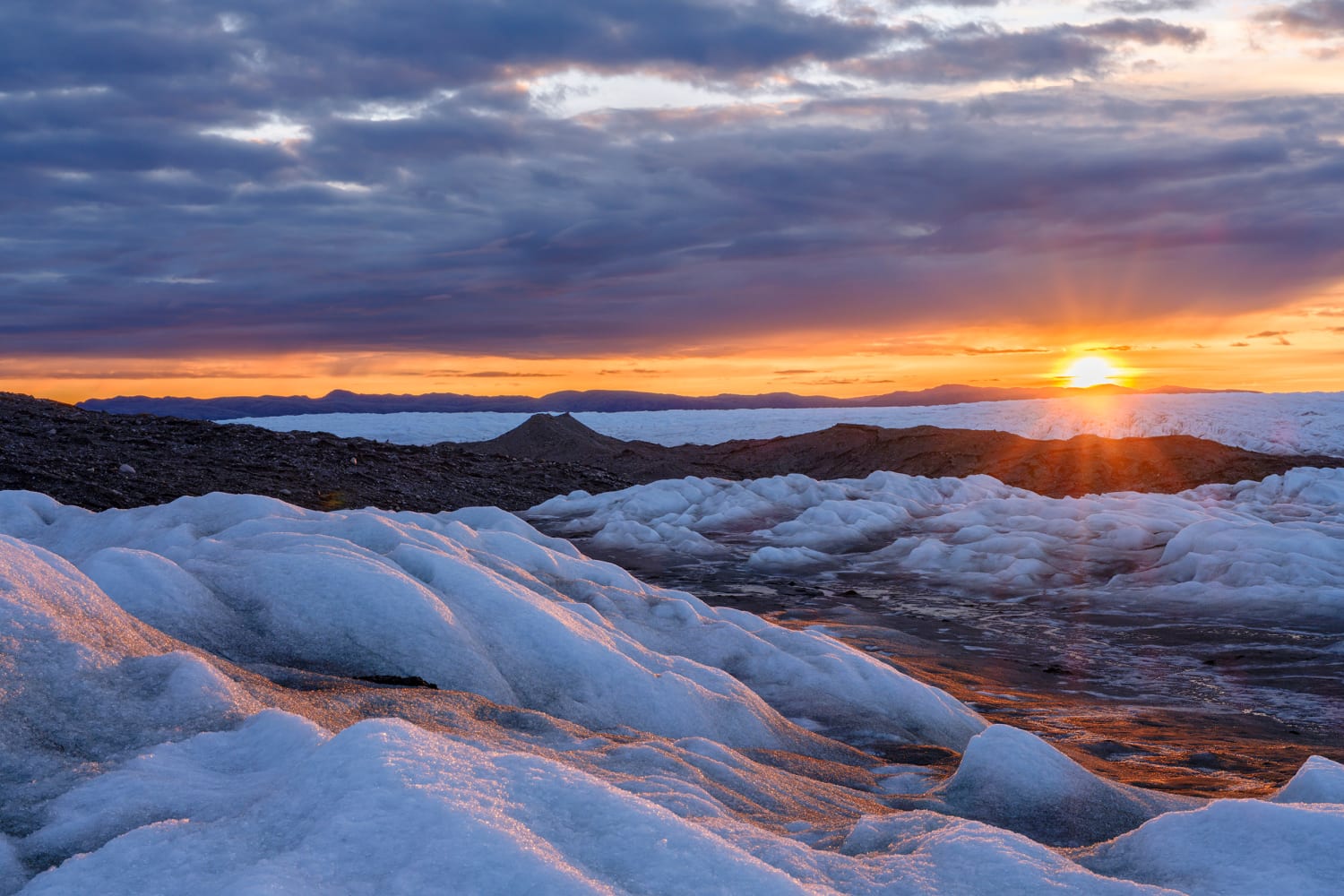
Global warming has slowed the Earth's rotation slightly, and may affect how we measure time.
A study published Wednesday found that the melting of polar ice — an accelerating trend driven primarily by human-caused climate change — has caused the Earth to rotate less quickly than it would otherwise.
As ice melts at the poles, it changes where Earth's mass is concentrated, said study author Duncan Agnew, a geophysicist at the Scripps Institution of Oceanography at the University of California San Diego. This change, in turn, affects the planet's angular velocity.
Agnew compared the dynamic to a figure skater spinning on the ice: “If you have a skater who starts turning, lowering his arms or extending his legs, he's going to slow down.” But if the skater's arms are pulled inward, the skater will spin faster.
Therefore, less solid ice at the poles means more mass around the equator, the Earth's waist.
“What you do with melting ice is you take the frozen water in places like Antarctica and Greenland, melt that frozen water, and transport fluids to other places on the planet,” Thomas Herring said. A professor of geophysics at MIT who was not involved in the new study. “Water flows toward the equator.”
The study suggests, in other words, that human influence has manipulated a force that has puzzled scientists, stargazers and scientists for thousands of years, something that was long considered constant and was beyond humanity's control.
“It's impressive, even to me, that we've done something that measurably changes how fast the Earth rotates,” Agnew said. “Unprecedented things are happening.”
His study, published in the journal Nature, suggests that climate change plays an important enough role in the Earth's rotation to face the opposite direction. Due to a combination of factors, the Earth has begun to spin faster in recent decades, a temporary trend that has led scientists for the first time to consider subtracting one “negative leap second” from clocks worldwide by 2026. But melting polar ice has delayed this The probability is about three years, Agnew estimates.
If timekeeping organizations eventually decide to add a negative leap second, the modification could disrupt computer networks.
The reason leap second adjustments were needed historically is that even without climate change, the Earth's daily rotation has become slower over millions of years, even though it may appear constant.
About 70 million years ago, days were shorter and lasted about 23.5 hours, according to a study conducted Proposed paleoceanography and paleoclimatology. This means that Cretaceous dinosaurs saw the planet for 372 days each year.
There are several major factors that influence the planet's rotation, sometimes working in conflict.
Tidal friction in the oceans, due in part to the Moon's gravity, slows the Earth's rotation. Meanwhile, since the last ice age, the Earth's crust has been rising in some areas in response to the removal of the weight of ice sheets. This effect changes as mass is distributed and the planet's rotation accelerates. Both of these processes are fairly constant and have predictable rates.
Another factor is the movement of fluids within Earth's liquid inner core, a wild card that can either speed up or slow down the speed of Earth's rotation, Agnew said. Fluctuations in the Earth's core are the main reason the planet has been rotating faster than expected in recent decades.
This faster rotation has prompted timekeepers to consider – for the first time since Coordinated Universal Time was officially adopted in the 1960s – whether it makes sense to introduce a leap second to keep Universal Time consistent with the Earth's rotation.
But the melting of polar ice bucks this trend and prevents any decision point on adding a negative leap second. According to Agnew's estimates, he has delayed this possibility from 2026 to 2029, if the current pace of the Earth's rotation continues.
As climate change intensifies, researchers expect melting ice to have a more profound impact on how the planet rotates.
“It will have a larger contribution over time and as the melting accelerates, which is what we expect will likely happen,” Herring said. He added that the new study was a comprehensive and powerful analysis that combines research from several scientific disciplines.
The need for timekeepers to keep global time in line with the Earth's rotation is not a new phenomenon. But historically, this has included adding leap seconds to the common standard for clocks when the slowing down of Earth's rotation causes astronomical time to fall behind atomic time (measured by the vibration of atoms in atomic clocks).
Adding or subtracting leap seconds is painful, because they have the potential to disrupt satellite, financial, and energy transmission systems that rely on extremely precise timing. Because of that, In 2022, world timekeepers voted to abolish the leap second addition and subtraction operations by 2035 and allowing universal time to move away from the pace of the Earth's rotation.
“There has been a campaign since 2000 to get rid of leap seconds,” Agnew said.
Regardless of whether the clocks change or not, the idea that melting polar ice affects the Earth's rotation indicates how important this issue is. Research has already described the profound impact that ice loss will have on coastal communities.
Scientists expect sea level rise to accelerate as the climate warms, a process that will continue for hundreds of years. Last year, leading polar researchers warned in a report that parts of major ice sheets could collapse, and that coastal communities should prepare for sea level rise of several feet. If humanity allows average global temperatures to rise by 2 degrees Celsius, the planet could be bound for a sea level rise of more than 40 feet.

“Web maven. Infuriatingly humble beer geek. Bacon fanatic. Typical creator. Music expert.”





More Stories
Scientists confirm that monkeys do not have time to write Shakespeare: ScienceAlert
SpaceX launches 23 Starlink satellites from Florida (video and photos)
A new 3D map reveals strange, glowing filaments surrounding the supernova